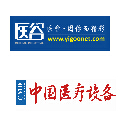|
According to International Data Corporation (IDC), in 2018, the wearable devices market will reach $30 billion, when there will be 111.9 million devices operating globally. With such statistics, wearable devices in China are experiencing a rapid increase in global presence. The data released by China Internet Network Information Center (CNNIC) indicates that the shipment of wearable devices last year was 5 million in China, and the amount will reach 40 million in 2015. The Institute of Engineering & Technology (The IET), one of the world’s largest professional bodies for professional engineers invited Dr. Erwu Liu to comment on the development of wearable devices in China. With regard to this issue, he said, “Presently, there is a bright future for wearable devices in the Chinese market. In 2014, a large amount of wearable devices available will be focusing on enriching entertainment, sports and healthcare.”
“As the novelty of smart phone is wearing off, would there be a brand new and amusing product replacing its position? I believe the wearable device should be the one.” Dr. Liu said, “The features of wearable devices aid us in increased familiarization with ourselves. Additionally, they assist us in developing our understanding of the physical world. To some extent, they will change our lives much more radically than mobile phones did.”
According to Dr. Liu, digital products play an essential role in our daily lives today. Such situations result in the creation of a friendly environment for the design and promotion of wearable devices. The main technological wearable devices that could be used to change our lives include speech recognition, eye-tracking, bone-conduction, low-power and energy technology, glasses-free 3D, high-speed Wi-Fi, implanted chip, and Internet of Things/big data/cloud computing.
Dr. Liu believes that wearable devices have great potential in within the healthcare industry. He said, “In order to obtain information for wearable devices to function, it is necessary for it to have human body contact. Thus, if these devices are able to be actively engaged with the Internet of Things, big data, and cloud computing, there lies considerable potential for innovative application. In comparison with the devices used for entertainment, wearable devices in healthcare could be more useful and valuable.”
With regard to the challenges wearable devices are facing, Dr. Liu said, “Healthcare is the most promising use of wearable devices. However, due to the required combination with traditional healthcare and network access, there would be high technical barriers for Chinese enterprises. Furthermore, obstacles stemming from the idea of traditional healthcare would also be inevitable. At its industrial level, as there would be a rapid growth of battery and power supply in 2014, thus greatly stimulating the development of wearable devices.”
On 26th September, the IET International HealthTech Conference 2014 will be convened in Beijing. This conference would consist of the presence of international experts and representatives of global institutions, and facilitate the discussion of technology development and potential application within the healthcare sector. Dr. Liu is currently an IET Fellow, and a professor from Tongji University. He holds a post doctorate degree, and has been specialized in the development of telecommunications for over 20 years, and possesses over 30 patents. His research is focused on the hotspot of wireless communication technologies, with the inclusion of the Internet of Things, the Internet of Vehicles high penetration communication, complex networks, wireless sensory networks, heterogeneous networks, and many more. Dr. Liu has also hosted and attended various domestic and international research topics, and was previously responsible for the creation of the enterprise-class Broadband Wireless Access System simulation platform based on OPNET. |





